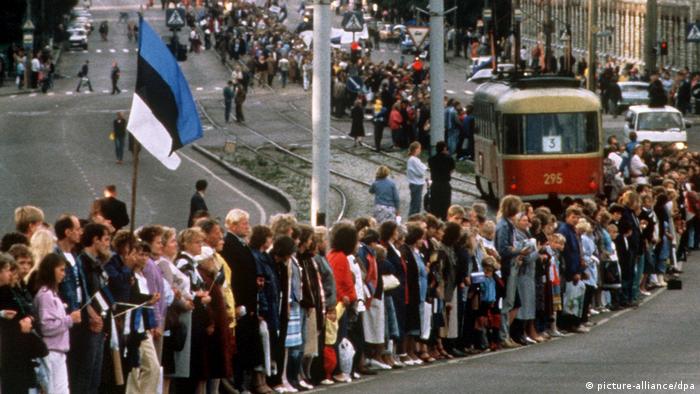After the primary spherical of elections to the Seimas of the Republic of Lithuania on Sunday, October 11, 85 % of the ballots were counted. According to preliminary information, opposition conservatives are within the lead – the Fatherland Union – Christian Democrats of Lithuania (SO-HDL) celebration is gaining 23.2% of the vote. The ruling Union of Peasants and Greens of Lithuania (SZK) is gaining 18.3% to date.
According to the most recent information printed on the web site of the Lithuanian National Radio and Television (LRT)adopted by the Labor Party (PT) with a preliminary results of 10.5%, which permits it to re-enter parliament, and the Social Democratic Party of Lithuania (SDPL), which has 9.7%.
Member of the ruling coalition doesn’t get into parliament
The Freedom Party and the opposition Liberal Union, which are operating for the primary time, are crossing the 5% barrier. The Lithuanian Social Democratic Labor Party (LSDPT), which is a member of the present authorities coalition, has not but overcome the 5% barrier, as have the remaining 10 events admitted to voting. Results can be adjusted after counting all ballots in large cities, the ultimate outcomes of the primary spherical will be introduced on October 12
New authorities coalition

Saulius Fel
The new authorities coalition could also be created by the SZK along with the PT and SDPL, mentioned the present Prime Minister of Lithuania Saulius Skvernelis. An different possibility is the coalition of the SZK with the Union of Liberals and the Freedom Party, the Lithuanian newspaper Delfi.lt quoted the prime minister as saying.
47.2% of voters took half within the elections, which is three % lower than within the earlier elections. The turnout could have been influenced by the particular circumstances in which the parliamentary elections are held because of the pandemic. The Lithuanian Seimas has 141 deputy mandates. The first spherical of elections determines who will get 70 seats on the celebration lists. The second spherical of single-member constituencies will happen on October 25.
See additionally:
-
30 years of the “Baltic Way”: a residing chain for independence
Action for the independence of the Baltic states
The motion for independence – “Baltic Way” was timed to coincide with the fiftieth anniversary of the signing of the non-aggression pact between the USSR and Nazi Germany, recognized as the Molotov-Ribbentrop Pact. A secret protocol was hooked up to it, distributing the zones of affect of the USSR and Germany in Eastern Europe: a part of Poland, the Baltic international locations and Bessarabia withdrew to the USSR. In the photograph: a human chain in Tallinn on August 23, 1989.
-
30 years of the “Baltic Way”: a residing chain for independence
Living chain 600 km lengthy
In the photograph: a part of the “Baltic Way” in Vilnius, the capital of the previous Lithuanian SSR. In complete, the size of the human chain was greater than 600 km: about 2 million folks took half within the motion – that is, about a quarter of the inhabitants of the three Baltic republics in 1989 taken collectively. At that time, the Baltic states didn’t but know how the Kremlin would react to the demonstration.
-
30 years of the “Baltic Way”: a residing chain for independence
Holding arms: from Tallinn to Vilnius
The motion acquired a extensive response: males, ladies, youngsters, previous folks and younger folks took to the streets. Neighbors introduced them meals, the police stopped site visitors. At precisely 7 pm, two million folks joined arms and didn’t separate them for quarter-hour, forming the longest human chain on the earth and connecting the three capitals – Tallinn, Riga and Vilnius.
-
30 years of the “Baltic Way”: a residing chain for independence
On the cusp of a new period
People got here to the motion with the lately banned nationwide flags of the three Baltic republics earlier than they were integrated into the USSR in 1940, and after the occasion ended, they sang people songs till late at evening. It appeared to them that independence was nearer than ever. And so it was.
-
30 years of the “Baltic Way”: a residing chain for independence
Moscow’s cautious response
The reality that a quarter of the inhabitants of the Baltic States took half within the motion speaks of its distinctive significance. The Kremlin kept away from violent actions, however tried in each attainable method to diminish the function of the “Baltic Way”. Despite this, the method of the collapse of the USSR was already launched: in 1991, Latvia, Estonia and Lithuania regained their independence.
-
30 years of the “Baltic Way”: a residing chain for independence
A spot where needs come true
The human chain ended within the sq. in entrance of the Vilnius Cathedral. Subsequently, a tile was put in in this place with the inscription “stebuklas”, which means “miracle” in Lithuanian. It is believed that if you stand on the range and, having made a want, flip 360 levels, then it will actually come true.
Author: Ralph Bozen, Alexandra Elkina








